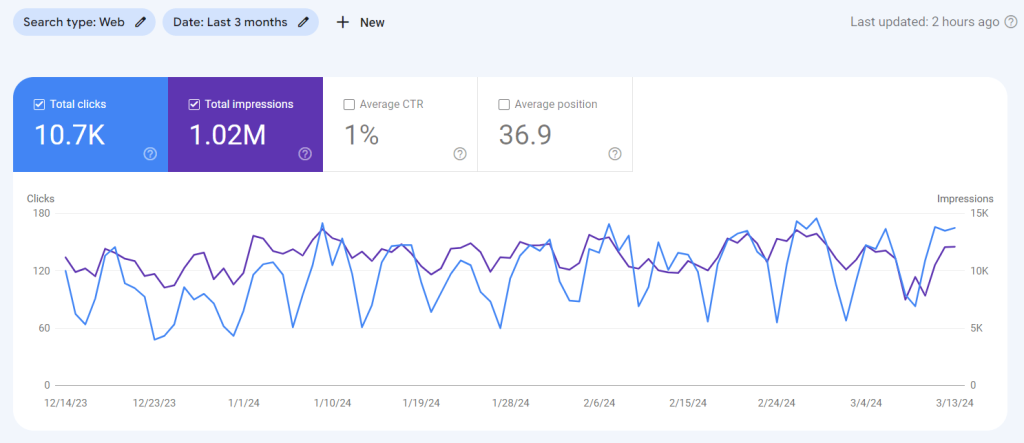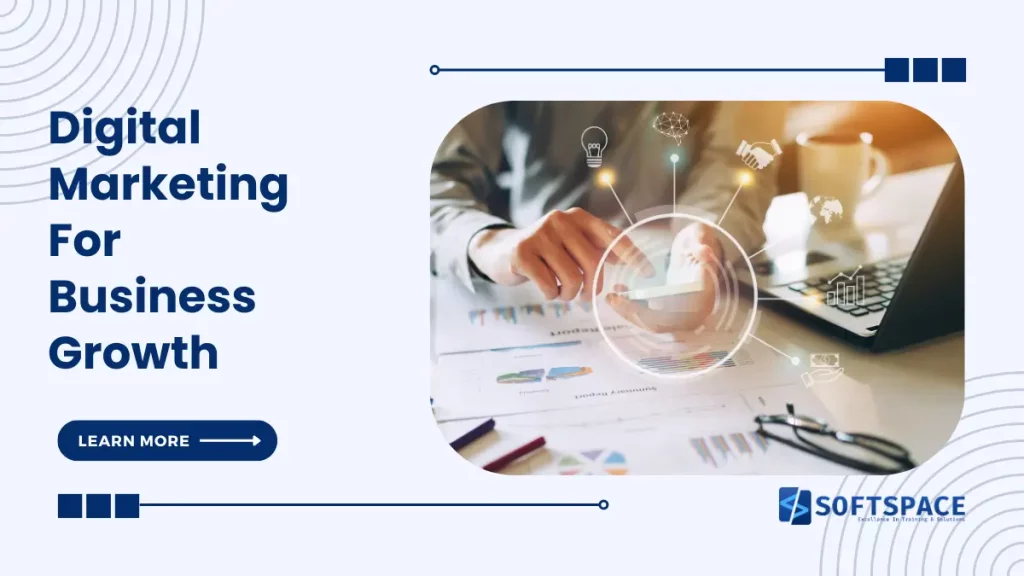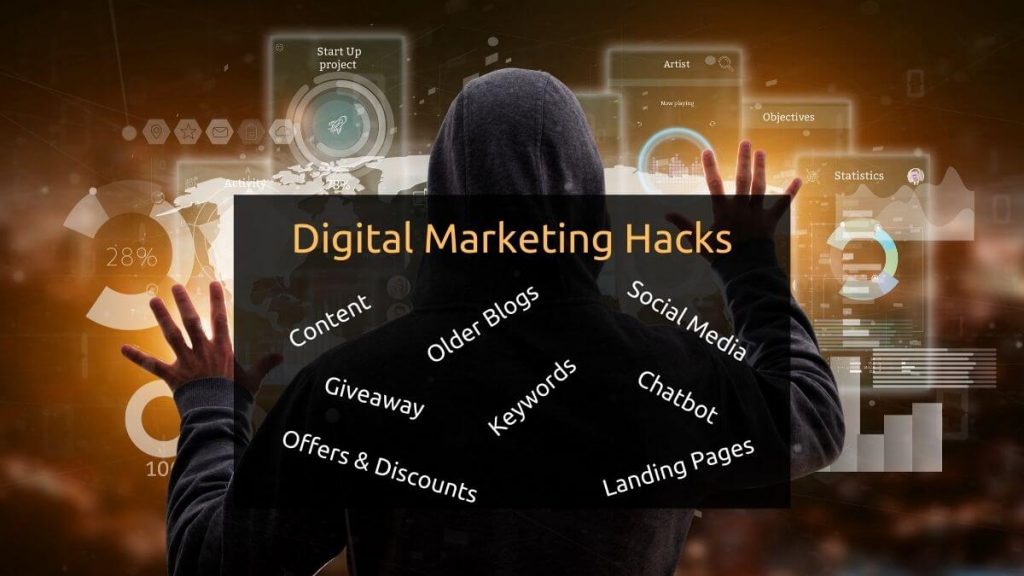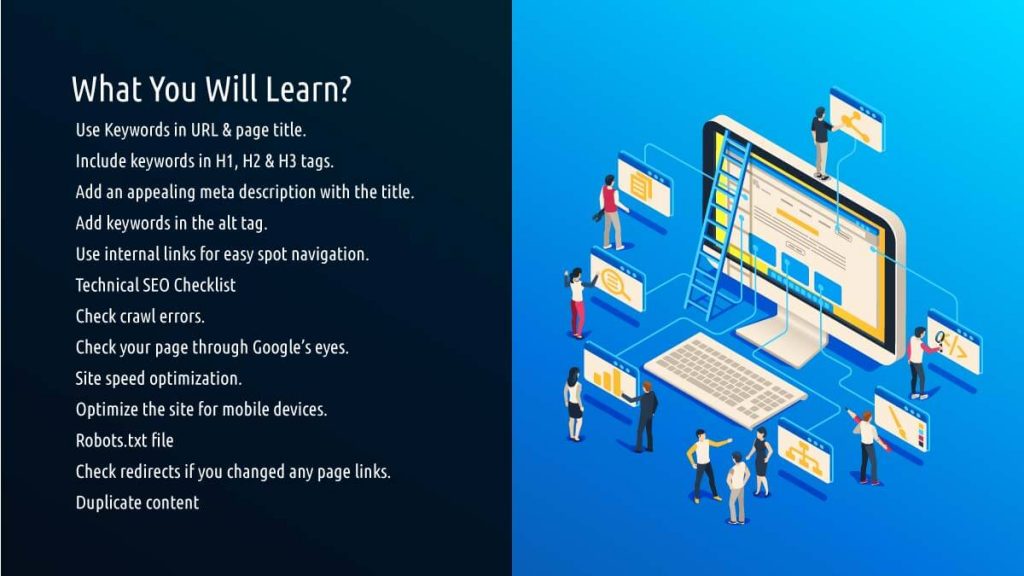Are you ready to take your business to the next level? In today’s digital age, having a robust online presence is essential for success. But with so many digital marketing strategies out there, it can be overwhelming to know where to start.
That’s why we’ve uncovered 9 hidden secrets of digital marketing for business growth to help you groom your business to grow better. From harnessing the power of SEO to leveraging social media, these insider tips will elevate your brand and attract more customers than ever before.
In an increasingly competitive marketplace, it’s crucial to stay ahead of the curve. Our experts have done the research and compiled these secrets to help businesses like yours thrive in the digital realm.
Whether you’re a startup looking to make waves or an established company seeking to expand your reach, these 9 activities in digital marketing for business growth will definitely unlock that path to growing your business.
So, if you’re ready to skyrocket your business growth and leave your competitors in the dust, it’s time to discover these game-changing strategies. Get ready to dominate the digital landscape and watch your business soar to new heights.
Table of Contents
The Importance of Digital Marketing for Business Growth
In today’s highly connected world, digital marketing has become a vital component of any successful business growth strategy. Gone are the days when traditional marketing methods alone could generate substantial results. With the majority of consumers now spending a significant amount of time online, businesses must adapt and embrace the digital realm to reach and engage with their target audience effectively.
Digital marketing encompasses a wide range of tactics and strategies, all aimed at increasing brand visibility, driving traffic to websites, and ultimately converting leads into paying customers.
From search engine optimization (SEO) to social media marketing, email campaigns, and content creation, a comprehensive digital marketing approach can help businesses thrive in the online landscape and achieve sustainable growth.
It is very much necessary to implement the following strategies in any activities that your undertake in your plan of digital marketing for business growth.
Understanding Your Target Audience
One of the most critical aspects of any successful digital marketing campaign is having a deep understanding of your target audience. Without knowing who your ideal customers are, it becomes challenging to tailor your marketing efforts effectively and engage with them on a personal level.
To gain insights into your target audience, start by creating buyer personas. These fictional representations of your ideal customers will help you identify their demographics, interests, pain points, and motivations. By understanding their needs and desires, you can create marketing messages and content that resonate with them, effectively capturing their attention and driving them to take action.
Additionally, leverage tools like Google Analytics and social media analytics to gather data on your audience’s behaviour and preferences. These insights will enable you to refine your marketing strategies, optimize your website, and deliver personalized experiences that cater to their specific needs, ultimately driving better results and business growth.
Digital Marketing for Business Growth: A Comprehensive Strategy
Now that you have a clear understanding of your target audience, it’s time to develop a comprehensive digital marketing strategy that aligns with your business goals and objectives. A well-defined strategy will serve as a roadmap for your marketing efforts, ensuring that you stay focused and make the most of your resources.
To learn about implementing the best digital marketing strategy for your business, you can also enroll in your practical Digital Marketing Course that teaches you everything related to SEO, Social Media, PPC and related activities that are suitable to market your brand.
Start by setting specific, measurable, attainable, relevant, and time-bound (SMART) goals. These goals will serve as benchmarks to track your progress and evaluate the success of your digital marketing campaigns. Whether your objective is to increase website traffic, generate leads, or boost online sales, having clear goals will provide direction and help you allocate your resources effectively.
Next, identify the digital marketing channels that are most relevant to your target audience and align with your goals. Consider channels such as search engines, social media platforms, email marketing, content marketing, and influencer partnerships. Each channel has its strengths and advantages, so choose the ones that will give you the best chance of reaching and engaging with your audience effectively.
Once you have identified your channels, create a content calendar to plan and organize your marketing activities. This calendar will ensure that you consistently deliver valuable and relevant content to your audience, keeping them engaged and nurturing their interest in your brand. Include a mix of content types, such as blog posts, videos, infographics, and social media updates, to cater to different preferences and optimize your reach.
Remember, a comprehensive digital marketing strategy is an ongoing process. Continuously monitor and analyze your results, making adjustments as needed to optimize your campaigns and achieve maximum impact. By staying agile and adapting to changes in the digital landscape, you’ll be well-positioned to drive business growth and stay ahead of the competition.
SEO for Increased Visibility
Search engine optimization (SEO) is a key element that can significantly impact your brand’s visibility and organic traffic when it comes to digital marketing for business growth and business highlighting in the long term. By optimizing your website and content for search engines, you can improve your rankings in search engine results pages (SERPs) and attract more qualified visitors to your site.
Start by conducting keyword research to identify the terms and phrases that your target audience is searching for. Use tools like Google Keyword Planner or SEMrush to find relevant keywords with high search volumes and low competition. Incorporate these keywords naturally into your website copy, blog posts, and other content to increase your chances of ranking higher in search results.
In addition to keywords, optimize your website’s technical elements, such as meta tags, titles, headings, and URLs. Ensure that your site is mobile-friendly and loads quickly, as these factors can impact both user experience and search engine rankings. Provide high-quality, informative, and engaging content that addresses your audience’s needs and encourages them to spend more time on your site.
Another important aspect of SEO is building high-quality backlinks. Backlinks are links from other websites that point to your site, signalling to search engines that your content is trustworthy and valuable. Look for opportunities to guest post on reputable websites or collaborate with influencers in your industry to earn backlinks and boost your site’s authority.
Remember, SEO is a long-term strategy that requires continuous effort and optimization. Stay updated with the latest trends and algorithm changes to ensure that your website remains visible and ranks well in search engine results. By investing in SEO, you can drive organic traffic to your site, increase brand visibility, and ultimately drive business growth.
Pay-Per-Click (PPC) Advertising and Its Benefits

Google Ads Expenses and Cost Per Click [For our Digital Marketing Course Ad]
While SEO is an excellent long-term strategy, it can take time to see significant results. If you’re looking for more immediate visibility and results, pay-per-click (PPC) advertising/ Google Ads can be a game-changer. PPC advertising allows you to bid on keywords and display ads on search engine results pages or other websites, paying only when a user clicks on your ad.
One of the key benefits of PPC advertising is its ability to drive highly targeted traffic to your website. Unlike traditional advertising methods, PPC allows you to reach people actively searching for products or services similar to yours. By targeting specific keywords, demographics, and locations, you can ensure that your ads are shown to the most relevant audience, increasing the likelihood of conversions and business growth.
Another advantage of PPC advertising is its flexibility and control. You have full control over your ad campaigns, including the budget, ad copy, and targeting options. This level of control allows you to optimize your campaigns in real-time, making adjustments based on performance data and maximizing your return on investment (ROI).
To get started with PPC advertising, research your target keywords, and identify the ones with high search volumes and low competition. Create compelling ad copy that entices users to click on your ads and take action. Set a budget that aligns with your marketing goals and monitor your campaigns closely to identify areas for improvement.
Remember, PPC advertising requires ongoing monitoring and optimization. Continuously analyze your campaign performance, test different ad variations, and refine your targeting to ensure that you’re getting the most out of your investment. By leveraging the power of PPC advertising, you can drive immediate traffic to your site, generate leads, and accelerate your business growth.
Content Marketing Strategies for Website Traffic

Our website content performance
In today’s digital landscape, content is king. Creating valuable and relevant content not only helps establish your brand as an authority in your industry but also attracts and engages your target audience. Content marketing is a strategic approach that focuses on creating and distributing content to drive brand awareness, engagement, and lead generation.
Start by defining your content marketing goals. Do you want to increase brand awareness, generate leads, or nurture existing customers? By identifying your goals, you can tailor your content strategy to achieve the desired outcomes.
Next, conduct thorough research to understand your audience’s interests, pain points, and preferences. Use this information to create content that provides value and addresses your audience’s needs. Whether it’s blog posts, videos, ebooks, or infographics, focus on delivering high-quality content that educates, entertains, and inspires your audience.
Another crucial aspect of content marketing is distribution. Creating great content is only half the battle; you also need to ensure that it reaches your target audience. Leverage various distribution channels, such as social media platforms, email newsletters, industry publications, and guest blogging opportunities, to amplify your content’s reach and maximize its impact.
In addition to creating and distributing content, it’s essential to measure and analyze its performance. Track metrics such as website traffic, engagement rates, lead conversions, and social media shares to understand what resonates with your audience and adjust your content strategy accordingly. By continuously refining your content marketing efforts, you can drive engagement, generate leads, and fuel your business growth.
Social Media Marketing for Brand Awareness
Social media has become an integral part of our daily lives, presenting businesses with a unique opportunity to connect with their target audience on a personal level. Social media marketing allows you to build brand awareness, engage with your audience, and foster customer loyalty.
Start by identifying the social media platforms that are most relevant to your target audience. Consider factors such as demographics, user behaviour, and industry trends. Facebook, Instagram, Twitter, LinkedIn, and YouTube are popular platforms that offer different advantages and cater to various audience segments.
This powerful social media marketing strategy will help you understand the social game.
- How to identify your target audience?
- How to create a buyer persona?
- How to set SMART goals?
- What type of content to create for social media?
Once you’ve chosen your platforms, create a social media content calendar to plan and schedule your posts. Focus on creating content that is valuable, shareable, and aligns with your brand’s voice and values. Mix promotional content with educational or entertaining posts to keep your audience engaged and interested in what you have to say.
In addition to organic content, consider leveraging social media advertising to boost your reach and engagement. Platforms like Facebook and Instagram offer powerful ad-targeting options that allow you to reach specific demographics, interests, and behaviours. Experiment with different ad formats, such as image ads, video ads, and carousel ads, to find the ones that resonate best with your audience.
Engaging with your audience is another crucial aspect of social media marketing. Respond to comments, messages, and mentions promptly, showing your audience that you value their feedback and opinions. Encourage user-generated content by running contests or featuring customer testimonials. By fostering a sense of community and building relationships with your audience, you can increase brand loyalty and drive business growth.
Email Marketing Campaigns
Email marketing remains one of the most effective digital marketing tactics for driving business growth. It allows you to communicate directly with your audience, nurture leads, and build long-lasting relationships with your customers. With the right email marketing strategy, you can drive conversions, increase customer retention, and generate a steady stream of revenue.
Start by building an email list of subscribers who have expressed interest in your brand by signing up for newsletters, downloading gated content, or making a purchase. Ensure that your opt-in process is clear, transparent, and complies with relevant data privacy regulations.
Next, segment your email list based on demographics, interests, purchase history, or engagement levels. By segmenting your list, you can deliver personalized and relevant content to each subscriber, increasing the chances of engagement and conversion.
When creating your email campaigns, focus on delivering value to your subscribers. Provide exclusive offers, industry insights, educational content, or personalized recommendations that address their needs and pain points. Experiment with different types of emails, such as newsletters, product updates, abandoned cart reminders, or customer feedback requests, to keep your audience engaged and interested in your brand.
To optimize your email campaigns, track and analyze key metrics such as open rates, click-through rates, and conversions. Use this data to refine your email content, subject lines, and send times to maximize engagement and deliver better results. Additionally, regularly clean your email list by removing inactive or unengaged subscribers to maintain a healthy email deliverability rate.
Remember, email marketing is a long-term strategy that requires consistency and nurturing. By delivering valuable content, building trust, and staying top of mind with your audience, you can drive customer loyalty, repeat purchases, and business growth.
The Role of Influencer Marketing in Social Highlighting
Influencer marketing has gained significant popularity in recent years and for a good reason. Collaborating with influencers can help businesses tap into new audiences, build brand credibility, and drive business growth. Influencers, who are individuals with a large following and influence in a specific niche, can effectively promote your products or services to their engaged audience, generating awareness and driving conversions.
When considering influencer partnerships, start by identifying influencers who align with your brand values and target audience. Look for influencers who have a genuine interest in your industry and have built a loyal following based on trust and authenticity. Choose influencers who have a track record of delivering results for brands and whose audience demographics match your target market.
Once you’ve identified potential influencers, reach out to them with a personalized pitch that highlights the mutual benefits of collaboration. Offer them a unique value proposition, such as exclusive discounts, early access to products, or the opportunity to co-create content. By providing value to influencers, you can build strong and authentic partnerships that drive business growth.
When working with influencers, give them creative freedom to showcase your products or services in a way that resonates with their audience. Encourage them to create high-quality content, such as sponsored blog posts, social media updates, or YouTube reviews, that adds value and aligns with their personal brand.
To measure the success of your influencer marketing campaigns, track key metrics such as reach, engagement, and conversions. Use unique tracking links or promo codes to attribute sales or website traffic generated by each influencer. Analyze the data to identify which influencers are driving the most significant results and optimize your future campaigns accordingly.
Remember, influencer marketing is about building relationships and creating authentic connections with your target audience. By leveraging the influence and reach of trusted individuals in your industry, you can increase brand awareness, foster trust, and drive business growth.
To conclude
Digital Marketing for business growth is effective if used properly and effectively. You cannot randomly use any platform to market any business. Some products and businesses get the best growth on social media, while others get the same through Google Ads and email marketing.
It is eventually about the product and where its customer hangs out online. You crack that code, you crack the marketing idea.
So, get on with it and start marketing your business like a professional. After all, its your business.




